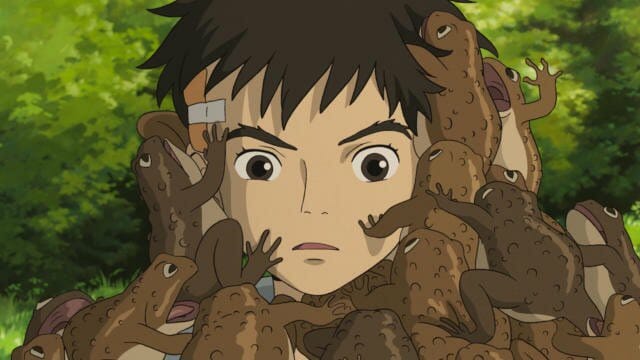After almost a decade of secrecy, the infamous director Hayao Miyazaki has released The Boy and The Heron which is meant to act as his swan song before he finally retires from creating animated films.
The plot starts off fairly simple. A young boy named Mahito lives in Tokyo, Japan during the Pacific War. After the tragic death of Mahito’s hospitalized mother in an air raid, his father remarries and the family travels to his pregnant stepmother’s country estate. There, his stepmother disappears and Mahito tries to find her but must follow a strange heron into a mysterious world where the lines between life, death, and time blur.
Like many Miyazaki movies, the world and character building mesmerize the audience. Mahito, voiced by Luca Padovan, is a complex young boy who is indeed heroic but still flawed and prone to selfishness, making him a highly relatable character. The supporting characters, most notably the grey heron voiced by the whimsical Robert Pattinson, and his stepmother Lady Himi voiced by Karen Fukuhara, are unique and refreshing with their stark differences and motivations. The universe that Mahito explores during his adventure is also surreal and filled with absurdities that baffle the mind. But underneath the wonderful whimsy, every frame is permeated with a feeling of immense heartache.

In Japan, the movie is released under a different name: How Do You Live? A reference to the 1937 Japanese novel of the same name that touches on the difficulties of growing up which parallel Mahto’s coming of age journey. But regardless of the name, the essential question that seems to touch on every part of this beautiful story is instead “How do you grieve?”.
As the audience learns more about the world, we witness the beauties of nature and the act of creation. But just as quickly, we also witness the subsequent death and destruction of some of the very same creatures, caused by man or just by chance. We see these beings who we’ve become invested in become victims of the narrative and circumstance. For instance, we meet the warawara, bubbly creatures that rise to the sky to be born in the real world. We also meet the pelicans who have no choice but to eat the warawara and are killed for this, even though they had no choice.

Throughout the film, the audience is forced to ask themselves how we would grapple with these complex emotions if we were in Mahito’s shoes. What would we do if our lives were built and rebuilt and the people in them replaced? If in times of war and even peace we were forced to stand back and watch as our lives are directed by forces so obviously out of our control? In that way, this film has a level of maturity not found in some of Miyazaki’s other works such as My Neighbor Totoro (1988), but still hints at the consequences of Japan’s imperialist history.
Moreover, the soundtrack and animation of the movie is beautiful. The music composed by Joe Hisaishi is lyrical, mysterious, and truly represents the constant rush of emotions with its strong orchestral pieces. The animation is distinct in the Studio Ghibli style, but also extremely smooth and with stunning landscapes that dazzle the viewer with their visual appreciation for nature.

With its two-hour run time, the film does in fact feel long in the sense that the pace is unhurried with a lengthy period of exposition. But this worked to its advantage by allowing the audience to truly explore the intricacies of the world along with Mahito and invest in all of the characters. The pace does speed up drastically towards the end of the movie and can become convoluted with its logic as the story ties up its loose ends towards the resolution. For that reason, it might be ideal to watch the movie, take some time to let it sit, and then rewatch the movie to truly digest everything this work of art has to offer.
Overall, this multifaceted film is a testament to the creative mind of Hayao Miyazaki and is one of the best animated films of the year by far.
5/5 Stars
